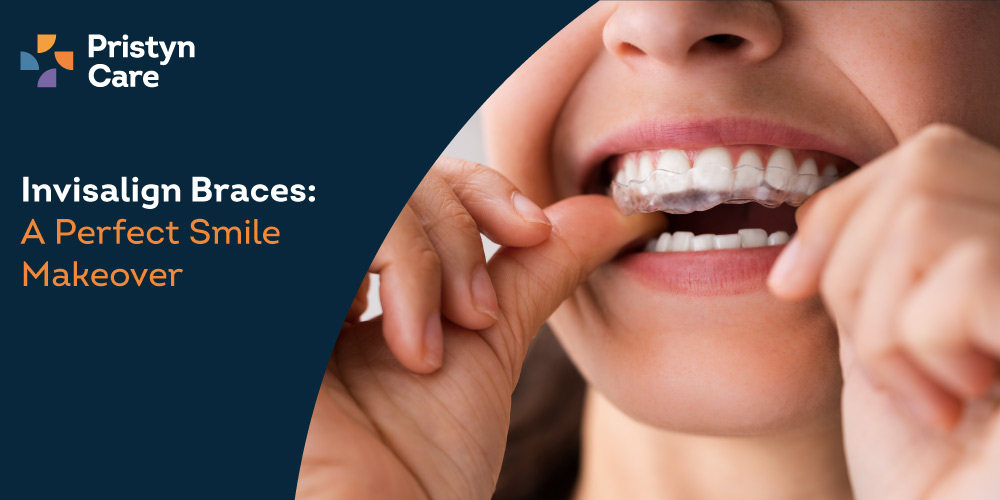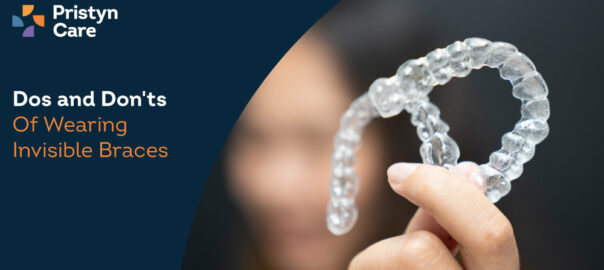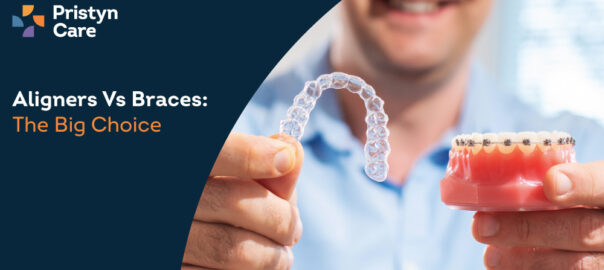![]() Views: 136
Views: 136
Get A Perfect Smile Using Invisible Aligners
Dedicated Support at Every Step!
Our Doctors are available 24 hours a day, 7 days a week to help you!
These innovative orthodontic devices provide a comfortable and virtually invisible way to straighten teeth and achieve the smile of your dreams. In this article, we will delve into the world of invisible aligners, exploring their benefits, how they work, and why they have become a popular choice for those seeking a straighter, more confident smile.
Table of Contents
How Can Invisible Aligners Give You A Perfect Smile?
Invisible aligners are the most recent and innovative creation in the field of orthodontics that offers a remarkable solution to achieve a perfect smile. These clear, removable trays work progressively to straighten teeth and correct misalignment of teeth.
Invisible aligners can effectively address issues such as overcrowding, gaps, misalignment, and bite problems. Transparent aligners are custom-made to fit snugly over your teeth, applying gentle and controlled forces to shift them into their ideal positions gradually. As you progress through the treatment, you will receive a new set of aligners that continue to guide your teeth toward alignment, resulting in a beautiful, straight smile. With the ability to correct your dental concerns while maintaining a natural appearance, invisible aligners offer a convenient and aesthetically pleasing path to that perfect, confident smile you've always wanted.
What Types of Issues Can Be Corrected With Invisible Aligners?
Invisible aligners can address a wide range of dental issues, including:
- Crowded Teeth: Invisible or transparent aligners are the best option for overcrowded teeth by gradually shifting and aligning them into their proper position. It places the teeth in the proper position and creates a proper space between the teeth, and improves the overall appearance.
- Spacing Issues: Gaps or spaces between teeth can also be corrected with invisible aligners. Through a planned treatment process, the aligners can gently move the teeth closer together, resulting in a more harmonious smile.
- Overbites: An overbite occurs when the upper front teeth overlap excessively with the lower front teeth. invisible can address mild to moderate overbites by gradually repositioning the teeth and aligning the jaws for improved bite alignment.
- Underbites: An underbite is characterized by the lower front teeth protruding past the upper front teeth. Invisible aligners can help correct this issue by moving the lower teeth back and aligning them with the upper teeth, improving both the aesthetics and functionality of the bite.
- Crossbites: Crossbites occur when the upper and lower teeth do not align properly, causing some teeth to sit inside or outside of their normal position. Clear aligners can correct crossbites by gently shifting the teeth into their correct alignment, ensuring a proper bite and reducing the risk of dental issues.
- Open Bites: Open bites are characterized by a gap between the upper and lower teeth when the jaws are closed. Invisible aligners can address open bites by gradually moving the teeth into their proper position, allowing for a more harmonious bite and improved facial aesthetics.
Invisible Aligner Treatment Explained Step by Step
The invisible aligners treatment involves several steps that aim to straighten and align teeth using clear, removable aligners. Here is an overview of the procedure:
- Initial Consultation: The first step is to schedule a consultation with an orthodontist or dentist who is trained in invisible treatment. During this appointment, the dentist will evaluate your teeth and determine if invisible aligners is the right treatment option for you. They will also discuss the treatment process and answer any questions you may have.
- Treatment Planning: The dentist will take digital impressions, photographs, and X-rays of your teeth. These records will be used to create a 3D digital model of your teeth, which the dentist will use to plan your treatment.
- Custom Aligners: Based on the treatment plan, a series of custom-made aligners will be created specifically for you. These aligners are made from a clear, BPA-free plastic material and are virtually invisible when worn.
- Fitting and Instructions: Once your aligners are ready, you will visit the dentist to have them fitted. The dentist will ensure that the aligners fit properly and provide you with instructions on how to wear and care for them. They will also discuss the expected duration of the treatment and schedule regular check-up appointments.
- Wearing the Aligners: You will be required to wear your aligners for 20 to 22 hours per day, remove them only for eating, drinking, brushing, and flossing. Every two weeks or as instructed by your dentist, you will switch to a new set of aligners. Each set of aligners is designed to gradually move your teeth into the desired position.
- Check-up Appointments: Throughout the treatment process, you will have regular check-up appointments with your dentist to monitor your progress. These appointments are typically scheduled every six to eight weeks.
- Completion of Treatment: Once your teeth reach their desired alignment, your dentist will determine that your treatment is complete. At this point, you may be required to wear retainers to maintain the new position of your teeth.
Who is a Good Candidate for Invisible Aligners?
A good candidate for the invisible aligners is someone who:
- Has mild to moderate dental alignment issues: invisible aligners are suitable for individuals with mild to moderate dental misalignments such as crooked teeth, gaps between teeth, or crowded teeth. It may not be the best option for severe cases that require more intensive orthodontic treatment.
- Is committed to wearing the aligners as instructed: The individual needs to wear the aligners for at least 20 to 22 hours a day. A good candidate is someone who can commit to wearing the aligners consistently and following the treatment plan provided by their orthodontist.
- Has realistic expectations: Invisible aligners can effectively correct various dental alignment issues, but it is important for candidates to have realistic expectations about the outcome. It is essential to understand that the duration of the treatment and the final results may vary depending on individual cases.
- Is in good overall oral health: A good candidate for aligners should have good overall oral health, including healthy gums and teeth. Any existing oral health issues, such as gum disease or tooth decay, should be addressed before starting the invisible treatment.
- Is comfortable with the cost and commitment: Invisible aligners are more expensive than conventional braces, and it requires ongoing commitment and follow-up appointments with the orthodontist. A good candidate should be comfortable with the cost and time commitment involved in the treatment process.
It is important to consult with an experienced orthodontist to determine if you are a good candidate for the invisible procedure. They will evaluate your specific dental needs and help you decide if invisible is the right option for you.
What are the Pros and Cons of Clear Aligners?
Here are some pros and cons of clear aligners:
Pros:
- Aesthetics: Clear aligners are virtually invisible and hence is a popular choice among individuals who are concerned about the appearance of traditional metal braces.
- Removable: They can be easily removed before eating, brushing, and flossing, allowing for better oral hygiene compared to traditional braces.
- Comfort: Transparent aligners are made of smooth plastic aligners, which are generally more comfortable to wear than traditional braces that have wires and brackets.
- Convenience: The aligners require fewer visits to the orthodontist for adjustments compared to traditional braces, making them a convenient option for individuals with busy schedules.
Cons
- Strict timing: The clear aligners strictly need to be worn for at least 20-22 hours per day to achieve desired results. Failure to comply may result in treatment delays or unsatisfactory outcomes.
- Not suitable for everyone: Aligners may not be suitable for complex orthodontic cases that require more extensive tooth movement or jaw realignment.
- Cost: Invisible aligners can be more expensive than traditional braces, depending on the complexity of the treatment required and the location of the dental practice.
- Discomfort: Although generally more comfortable than traditional braces, some individuals may experience initial discomfort or soreness when wearing invisible aligners as they gradually shift the teeth into their desired positions.
It is important to consult with an orthodontist to determine if invisible braces are the right option for your specific orthodontic needs and preferences.
What is the Cost of Invisible Aligners in India?
The cost of invisible aligners may range between the cost of INR 40000 to INR 80000 in India. The cost may vary for each individual depending on the severity of the misalignment, orthodontist consultation charges, extent of crowding etc.
The clear aligners treatment is not covered under any health insurance as it is not medically required. Getting the teeth aligned totally depends on the individual choice.









